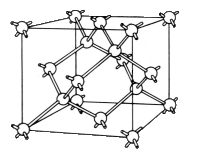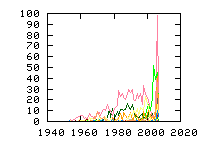« Previous
Next »
(6 hits, 1/1)
Showing
10, 25, 50, 100, 500, 1000, all papers per page.
Sort by:
last publication date,
older publication date,
last update date.
- 1. Appl. Phys. Lett. 89, 152904 (2006) , “First principles calculations of oxygen vacancy passivation by fluorine in hafnium oxide”, Wei Chen, Qing-Qing Sun, Shi-Jin Ding, David Wei Zhang, and Li-Kang WangThe fluorine incorporation into HfO2 with oxygen vacancies has been investigated using first principles calculations. The authors show that atomic fluorine can efficiently passivate the neutral oxygen vacancy with excess energies of 4.98 and 4.39 eV for threefold- and... (Read more)
- 2. Appl. Phys. Lett. 89, 142914 (2006) , “Defect passivation in HfO2 gate oxide by fluorine”, K. Tse and J. RobertsonThe authors have calculated that fluorine substituting for oxygen gives no gap states in HfO2. This accounts for the good passivation of oxygen vacancies by F seen experimentally. Bonding arguments are used to account for why F may be the most effective passivant in ionic oxides such as... (Read more)
- 3. Phys. Rev. B 74, 174101 (2006) , “First-principles study of the intrinsic defects in PbFCl”, Bo Liu, Zeming Qi, and Chaoshu ShiFirst-principles pseudopotential calculations have been performed to investigate intrinsic defects including vacancies, interstitials, antisite defects, as well as Schottky and Frenkel defects in PbFCl crystals. For the isolated vacancies and interstitials, their formation energies are critically... (Read more)
- 4. Phys. Rev. B 74, 121201 (2006) , “Prediction of the anomalous fluorine-silicon interstitial pair diffusion in crystalline silicon”, Scott A. Harrison, Thomas F. Edgar, and Gyeong S. HwangWe propose a diffusion pathway for a fluorine-silicon interstitial pair (F-Sii) in silicon based on extensive first-principles density functional calculations. We find the F-Sii pair to be most stable in the singly positive charge state under intrinsic conditions and can exist... (Read more)
- 5. Phys. Rev. B 72, 045219 (2005) , “Fluorine in Si: Native-defect complexes and the supression of impurity diffusion”, Giorgia M. Lopez, Vincenzo Fiorentini, Giuliana Impellizzeri, Salvatore Mirabella, Enrico NapolitaniThe transient enhanced diffusion of acceptor impurities severely affects the realization of ultrahigh doping regions in miniaturized Si-based devices. Fluorine codoping has been found to suppress this transient diffusion, but the mechanism underlying this effect is not understood. It has been proposed that fluorine-impurity or fluorine–native-defect interactions may be responsible. Here we clarify this mechanism combining first-principles theoretical studies of fluorine in Si and purposely designed experiments on Si structures containing boron and fluorine. The central interaction mechanism is the preferential binding of fluorine to Si-vacancy dangling bonds and the consequent formation of vacancy-fluorine complexes. The latter effectively act as traps for the excess self-interstitials that would normally cause boron transient enhanced diffusion. Instead, fluorine-boron interactions are marginal and do not play any significant role. Our results are also consistent with other observations such as native-defect trapping and bubble formation. (Read more)
- 6. Phys. Rev. Lett. 93, 245901 (2004) , “Ab Initio Calculations to Model Anomalous Fluorine Behavior”, Milan Diebel, Scott T. Dunhammplanted fluorine is observed to behave unusually in silicon, manifesting apparent uphill diffusion and reducing diffusion and enhancing activation of boron. In order to investigate fluorine behavior, we calculate the energy of fluorine defect structures in the framework of density functional theory. In addition to identifying the ground-state configuration and diffusion migration barrier of a single fluorine atom in silicon, a set of energetically favorable fluorine defect structures were found (FnVm). The decoration of vacancies and dangling silicon bonds by fluorine suggests that fluorine accumulates in vacancy-rich regions, which explains the fluorine redistribution behavior reported experimentally. (Read more)
« Previous
Next »
(6 hits, 1/1)
Showing
10, 25, 50, 100, 500, 1000, all papers per page.
Sort by:
last publication date,
older publication date,
last update date.
All papers (3399)
Updated at 2010-07-20 16:50:39
Updated at 2010-07-20 16:50:39
(view as: tree
,
cloud
)
| 1329 | untagged |
Materials
(111 tags)
Others(101 tags)
Technique
(46 tags)
Details
(591 tags)
Bond(35 tags)
Defect(interstitial)(18 tags)
Defect(vacancy)(15 tags)
Defect-type(19 tags)
Element(65 tags)
Energy(8 tags)
Isotope(56 tags)
Label(303 tags)
Sample(17 tags)
Spin(8 tags)
Symmetry(15 tags)

